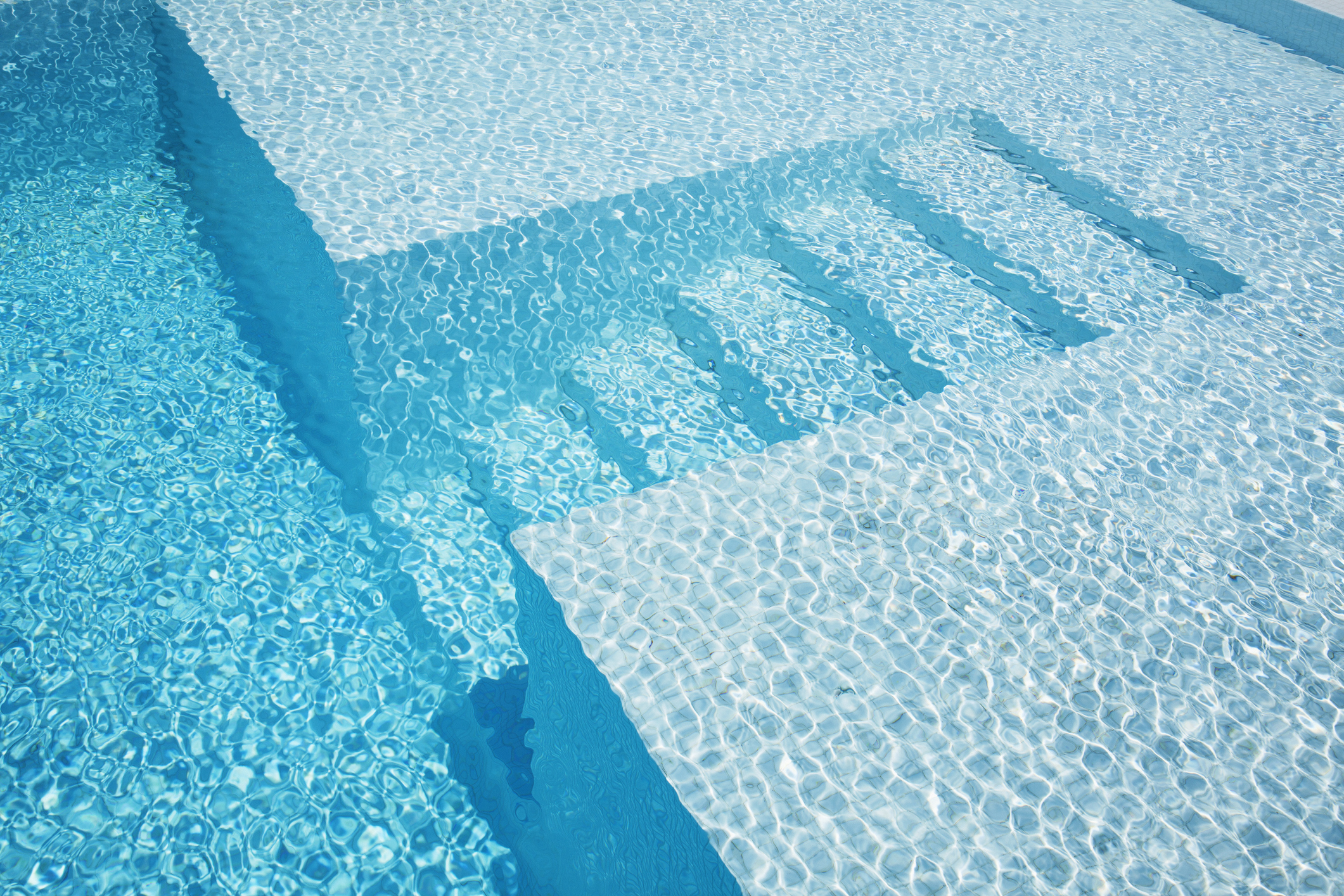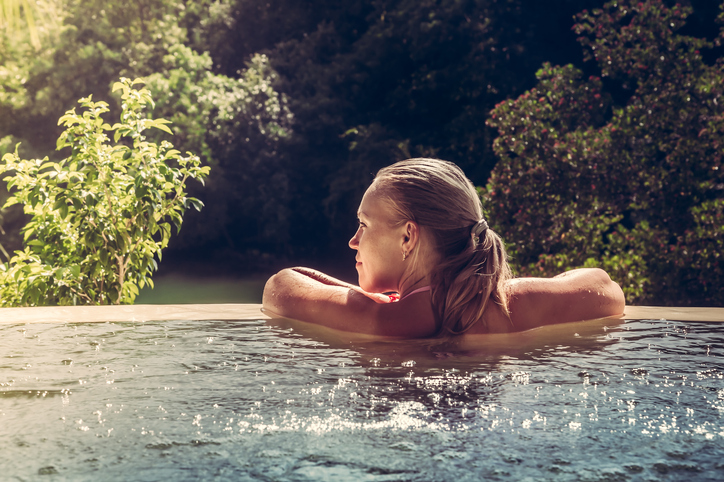The Tao of Texture in WaterSpace Design

Texture is an element that means more to landscape architects and WaterSpace designers than the word suggests to others. A recent debate with my wife over a bathroom remodel reminded me just how far apart that understanding can be.
She is subscribed 100 percent to the clean, modern contemporary style that has become the leading trend in design. I suggested we needed a little texture to create a point of emphasis. Unfortunately, my idea went completely against the grain of her concept of modernity.
I countered, no, you can have a smooth surface and still evoke texture. For example, that white marble vanity top you like would have more texture and be a striking focal point with some dark veins running through it. Smooth, sleek and textured. Problem solved and peace returned.
Our initial differences arose from a common misunderstanding that isn’t easily bridged. You have to learn to see texture the way artists and architects see it. Without some training, most of us equate texture with something rough or rustic—certainly not sleek and smooth.
Texture as a Design Philosophy
Perhaps it will help to think of texture as the Chi of your WaterSpace environment. According to the Tao, every space has Chi, a life-force whose flow of energy—for good or bad—is present in the spaces we inhabit.
The Tao identified five elements: wood, fire, earth metal and water. Each element must be in positive balance within your surroundings for you to enjoy a beneficial flow of energy. These are the same elements we employ in building a WaterSpace, and they all add up to what we call texture.
Let’s investigate how texture provides that subtle yet profound Chi-like influence.
Feeling beyond Touch
Landscape texture reaches beyond touch, beyond sight. You experience it with all your senses. People have felt its effect as a mystical experience for millennia. Where the Tao called it Chi, ancient Greeks saw it as an elemental Spirit.
As the Tao taught, we are affected by the harmony—or disharmony—of the space surrounding us. Before any earth is moved, architects, landscape and WaterSpace designers have to anticipate the harmonious interplay of every element in a planned space. It’s their job to foresee how different textures could make or break the harmony you and your guests would feel.
Try this experiment the next time you walk into an outdoor space: Ask yourself, “How does this environment make me feel?” A conscious awareness of this otherwise unconscious effect is an essential skill landscape designers must develop.
Balance, Contrast and Rhythm
Texture is the balance and contrast of opposites: hot and cold, light and dark, smooth and rough, tall and short. It’s the warmth of sun and fire, the cool of water, shade, a breeze. The rhythm of tall and low, large and small shapes.
Your WaterSpace design wants to hit that sweet spot where you have balance without boredom, variety without chaos. Often you’re designing with elements that you can’t control, only accommodate: nature, weather, seasons, and the things beyond your property line.
Water Adds Texture and Change
Water plays with texture in so many interesting ways. It can stand still in a pool and reflect like a mirror. The same pool water can ripple and move. Movement is flow and energy. Flow can be calming or invigorating, or some combination of the two. Flow can be heard, like music or wind, or seen and heard, like wind stirring pool water or a nearby lake. It can be the flow of a stream or river, or ocean tide. Perhaps your property is graced by one of these natural water scenes. Or you want to add a purpose-built water feature—falling, flowing or meandering through your property.
If your pool will overlook ocean waves breaking on shore, you may want to balance the sound of surf with a serene fountain’s trickle, placed in a grotto or tucked in a quiet garden. Or you can go with a water feature that feels more energetic, such as a cascading waterfall.
Light and dark, warm and cool provide further contrasts. On a cool evening, you could enjoy the warm glow of burning embers in a fire pit, or the visual excitement of flaming torches, dancing light across your pool’s water. You may be thinking about a poolside morning coffee or waterside dining in the evening, with the pool positioned so a light breeze brings fresh scents from your garden.
Unity and Contrast in Shapes and Materials
Some pieces of your design are constantly moving—many others are affected by movement. You can sense the texture of movement in the interplay of stationary shapes and surfaces. Designers seek to create unity and contrast in the rough or smooth surfaces of wood, metal and stone—or other materials made to look like those things.
Perhaps you prefer decks of wood or patios of brick and stone—or want both. Pools can be surrounded by tiles or decking, concrete or stone pavers. A nearby structure of sleek metal, glass and polished wood—or heavy rustic beams, stone and concrete—will further set the tone and texture.
The materials you choose and the features that surround your pool area are part of an endless dance of contrast and unity. This textural movement creates the different tones, the harmony of your WaterSpace.
Dancers Planted in the Earth
They may be rooted in the ground, but plants are in constant movement, adding variety to texture and space. Their moves are often in slow motion—growing upward and outward and sending out roots. They change colors and textures with the seasons. They bloom, grow leaves, yield fruit or berries. Their leaves turn color in the fall and leave branches bare in winter.
Sometimes you can see planted things move. Both trees and bushes dance softly in a light breeze. When you look up, you can see the leaves of taller trees moving to winds you can’t feel on the ground.
Seasons of Changing Texture
You can plan for changes in texture and shape. Just as you do for summer, spring or fall, you can make winter colors part of the plan. The bark of the native Red Twig Dogwood, for example, or the Coral Bark Japanese Maple, can provide bright contrast to the monochrome tones of winter. Both do well in the Mid-Atlantic climate.
Change of texture is natural. It’s a part of the yin and yang of WaterSpace design. The challenge of managing change is one of the big reasons you want to get help planning and maintaining your WaterSpace. Starting with good design and paying consistent attention through the years will minimize problems. Let the natural changing textures of time and space enhance your WaterSpace year after year.

